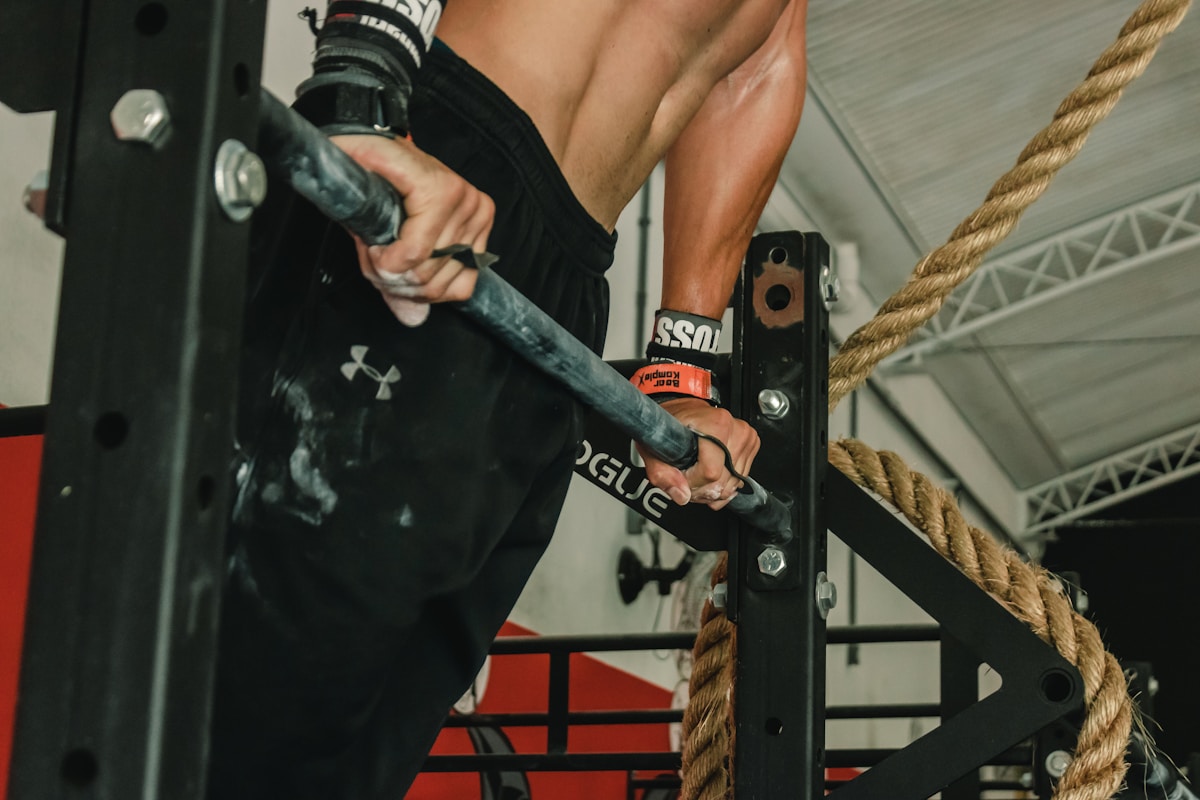Mastering CrossFit: Essential Tips and Techniques for Peak Performance
Proper Form and Technique: Foundations for CrossFit Success
Proper form and technique are crucial aspects of mastering CrossFit and achieving peak performance. CrossFit is known for its dynamic and functional movements, which require a solid foundation to ensure safety and maximize results.
To excel in CrossFit, it is essential to prioritize proper form in every exercise. This means focusing on correct body alignment, movement execution, and range of motion. By maintaining proper form, you reduce the risk of injury and optimize the activation of targeted muscles.
Learning the correct technique for fundamental CrossFit movements is a key step in building a strong foundation. These movements include exercises like squats, deadlifts, kettlebell swings, pull-ups, and Olympic lifts. Mastering the technique for each movement will not only enhance your performance but also prevent imbalances and inefficiencies in your training.
Working with a qualified CrossFit coach or trainer can greatly help in honing your form and technique. They can provide guidance, corrections, and valuable feedback to ensure that you are performing each exercise with precision and efficiency. Additionally, participating in regular technique-focused sessions or workshops can further enhance your understanding and execution of proper form.
Remember, practicing proper form and technique is not just about aesthetics but also about optimizing performance and minimizing the risk of injury. By prioritizing these foundations, you set yourself up for long-term success in your CrossFit journey.
Understanding CrossFit Movements: Key Exercises for Building Strength and Endurance
Understanding CrossFit movements is essential for mastering this high-intensity fitness regimen and achieving peak performance. CrossFit incorporates a wide range of exercises that target various muscle groups and energy systems, resulting in improved strength, endurance, and overall fitness.
Key exercises in CrossFit include movements such as squats, deadlifts, clean and jerks, snatches, kettlebell swings, box jumps, burpees, and pull-ups. These exercises are designed to engage multiple muscle groups simultaneously and challenge the cardiovascular system, promoting functional strength and conditioning.
By incorporating these foundational movements into your training routine, you can build strength, increase power, and improve muscular endurance. These exercises often involve compound movements that mimic real-life activities, enhancing your ability to perform everyday tasks with ease.
Moreover, CrossFit workouts often involve high-intensity interval training (HIIT) and Tabata-style workouts, which combine short bursts of intense exercise with brief recovery periods. These training methods are effective for improving cardiovascular fitness, fat burning, and boosting overall stamina.
Understanding the mechanics and benefits of each exercise will help you develop a well-rounded CrossFit program tailored to your fitness goals. Whether you aim to improve strength, endurance, or overall performance, incorporating these key movements into your training regimen will lay the foundation for success in CrossFit and contribute to your journey towards peak performance.
Programming and Periodization: Structuring Your CrossFit Training for Progression
Programming and periodization are crucial elements in CrossFit training to ensure continual progression and optimal performance. By structuring your training with a well-designed program, you can effectively target different fitness domains, avoid plateaus, and achieve peak performance in CrossFit.
Programming refers to the overall plan that outlines the frequency, intensity, and variety of workouts over a certain period. It involves strategically incorporating different types of workouts, such as strength training, endurance workouts, skill practice, and metabolic conditioning. This balanced approach allows for comprehensive development and prevents overtraining.
Periodization, on the other hand, involves dividing your training into specific phases or cycles, each focusing on different aspects of fitness. These cycles typically include base building, strength development, skill refinement, and competition preparation. By following a periodized approach, you can gradually increase the training intensity, volume, and complexity while allowing for proper recovery and adaptation.
A well-structured CrossFit program considers the individual’s goals, fitness level, and training experience. It allows for progressive overload, ensuring that workouts become progressively more challenging over time. This approach prevents stagnation and promotes continual improvement in strength, endurance, and overall performance.
Additionally, programming and periodization help prevent injuries by incorporating proper rest days and recovery periods into the training schedule. They also allow for specific focus on weaknesses and areas that need improvement, promoting a well-rounded and balanced physique.
By implementing a carefully planned and periodized training program, you can optimize your CrossFit training and achieve steady progress towards your fitness goals. It provides the framework for efficient and effective training, helping you reach new levels of performance in your CrossFit journey.
Nutrition and Recovery: Fueling Your Body and Optimizing Performance in CrossFit
Nutrition and recovery are fundamental aspects of optimizing performance in CrossFit. Proper fueling and adequate recovery allow your body to perform at its best, maximize gains, and prevent injuries. In CrossFit, where workouts are intense and physically demanding, paying attention to nutrition and recovery is essential for peak performance.
Nutrition plays a vital role in fueling your body for workouts and facilitating optimal recovery. A well-balanced diet should include macronutrients (carbohydrates, proteins, and fats) in appropriate proportions to support energy production, muscle growth, and repair. Carbohydrates provide the necessary fuel for high-intensity workouts, proteins aid in muscle recovery and growth, and fats support hormone production and overall health.
In addition to macronutrients, micronutrients such as vitamins and minerals are crucial for various physiological processes in the body. Adequate hydration is also vital for optimal performance and recovery, as dehydration can negatively impact both physical and mental performance.
Equally important is prioritizing recovery. CrossFit workouts place significant stress on the body, and proper recovery allows for adaptation and improvement. This includes adequate rest, quality sleep, and active recovery strategies such as foam rolling, stretching, and mobility exercises. Additionally, strategies like cold baths, compression garments, and massage therapy can aid in muscle recovery and reduce inflammation.
By prioritizing nutrition and recovery, you provide your body with the necessary resources to perform at its best, prevent fatigue, and reduce the risk of injury. Understanding the importance of fueling your body properly and implementing effective recovery strategies will contribute to improved performance and long-term success in CrossFit.
Mental Resilience: Developing a Strong Mindset for CrossFit Challenges
CrossFit challenges not only test your physical abilities but also require mental resilience and fortitude. Developing a strong mindset is crucial for pushing through difficult workouts, overcoming obstacles, and achieving peak performance in CrossFit.
Mental resilience in CrossFit involves cultivating a positive and determined mindset that enables you to face challenges head-on and persevere. It starts with setting clear goals and maintaining a growth mindset, believing in your ability to improve and achieve greatness. Embracing challenges as opportunities for growth and viewing setbacks as learning experiences can help you maintain a resilient mindset.
In addition to goal-setting and a growth mindset, mental strategies such as visualization and positive self-talk can enhance your mental resilience in CrossFit. Visualizing successful performances and affirming positive statements can boost confidence and motivation during workouts. Building mental toughness through consistent practice and exposure to challenging situations can also strengthen your resilience over time.
Furthermore, cultivating a supportive and encouraging training environment can contribute to mental resilience. Surrounding yourself with like-minded individuals who share your passion for CrossFit can provide a sense of community and support, helping you stay motivated and focused on your goals.
Developing mental resilience is an ongoing process that requires dedication and practice. By training your mind to remain focused, determined, and positive, you can overcome mental barriers, embrace challenges, and unlock your full potential in CrossFit.
Conclusion
Developing mental resilience is a key component of mastering CrossFit. By cultivating a strong mindset, setting clear goals, and employing mental strategies, you can overcome obstacles, stay motivated, and achieve your best performance. Remember, mental resilience is a skill that can be developed and strengthened with consistent practice. Embrace the challenges, persevere through setbacks, and watch your performance soar to new heights in CrossFit.



